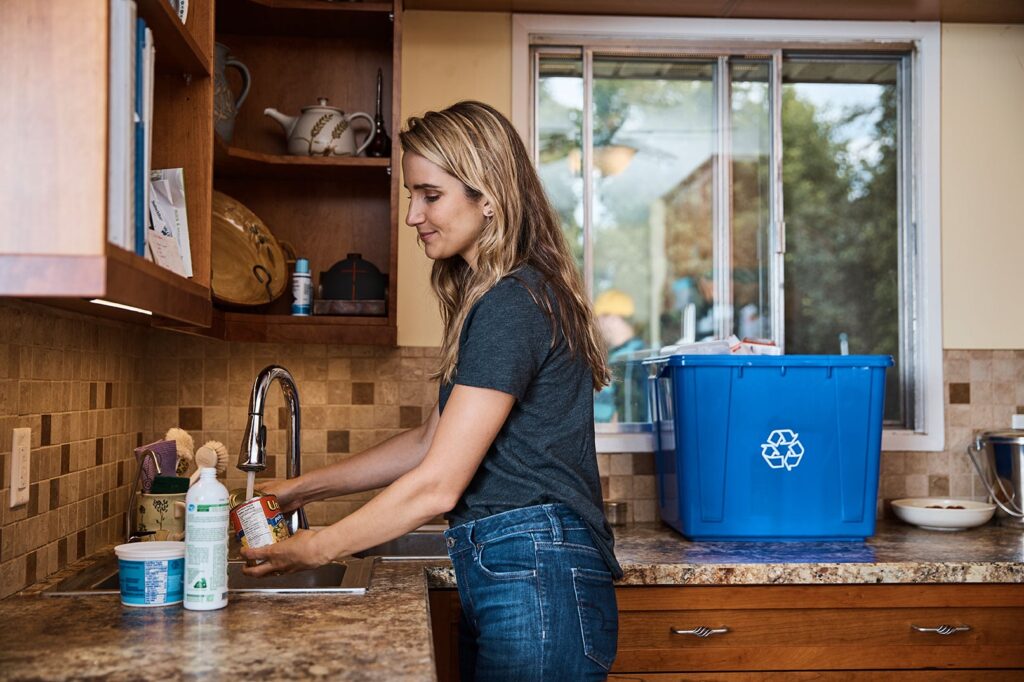Many of us have responded to the COVID-19 pandemic and adapted accordingly. We are spending more time at home, consuming more of our meals at home, and possibly accumulating more packaging and paper recycling as a result.
Our new reality is a home-based reality, which may mean you will find your recycling piling up temporarily. Here are a few quick tips to help you keep it organized until your next collection day, or your next opportunity to return it to a depot.
1. Reuse items a couple of times before recycling
Even though something is usually destined for your recycling bin right after use, now is a great time to consider if you can give it one or two more uses before it hits the bin. Turn a mayonnaise jar into a handy felt or pencil crayon holder, especially if the kids are home and they (and you) might want them to be easily accessible. Re-purpose an empty plastic bottle or glass jar for your special homemade salad dressing. Convert a cat litter plastic tub to a planter to start your spring planting indoors while it is still frosty overnight. Transform toilet paper cores (we know you have lots) into a crafty pair of binoculars for your little one. Then, when you have exhausted all uses for the materials, the items can go in your recycling bin or to the depot.
2. Pick a location
You likely already sort your recyclables at home, but with more materials and possibly a recycling service disruption, you may need a temporary storage system. When the recycling bins inside your home are full, you will need to move their contents to a storage spot. Ideally, this is a spot separate from your typical household stomping grounds. Consider the garage, laundry room, mudroom, or utility closet. If you live in a condo or apartment, consider dedicating a corner or part of a closet to your recycling. Everyone’s home is different, so take a moment to determine where you may be able to find a little extra space.
3. Figure out the best system
You don’t necessarily need a big footprint to store your recycling. Think ‘outside the bin’ to figure out a great solution for your space – and think vertical, hung or tucked away.
- Vertical/stacked – taking advantage of the vertical space in your home reduces the square footage required to store recycling. Try to devise a way to store your recyclable materials vertically.
- Hung – like vertical storage, placing materials in containers or bags and hanging them on a wall reduces the floor space your recycling will take.
- Tucked away – look for creative locations where you can store recycling (e.g. under a bed, behind a couch, or in a closet corner). Here are some examples of creative ideas to set up a storage system:
Milk crates, or other stackable or hanging options, keep recycling off the ground.
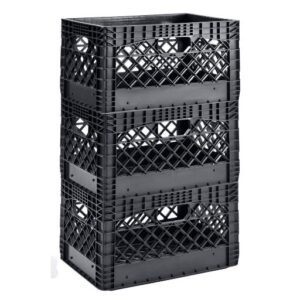
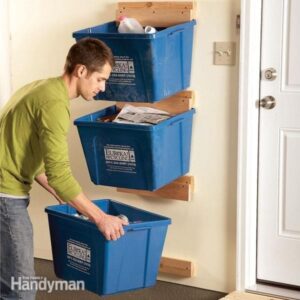
(photos: Home Depot and FamilyHandyman.com)
Plastic-coated shopping bags with sturdy handles are great to sort, store, and transport recycling. You can line up the bags on a deep shelf, hang them from hooks or keep them tucked under shelving units.
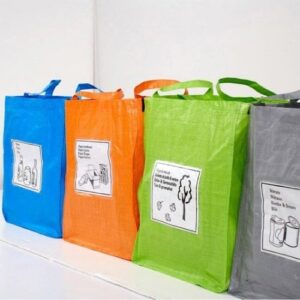
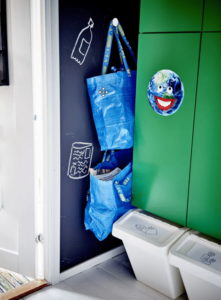
(photos: bhg.com and apartmenttherapy.com)
4. Compact your materials
If materials are big, bulky and full of air, try compacting them to make room for more materials. Put simply, smoosh them! Flatten plastic milk jugs, milk cartons, and boxes. Stuff your plastic bags into one plastic bag. Have one bag for plastic bags and overwrap and another for other flexible plastic packaging like crinkly wrappers and stand-up and zipper-lock pouches. Test your strength and give metal cans a little squeeze. Consider it part of your at-home fitness regime.
5. Stack them
If you have plastics that are the same container type, shape and resin code (the number in the recycling symbol; 1-7), feel free to stack them. You probably do it in your cupboards with storage containers, why not try it in your recycling bin.
6. Test your limits
You can set out as much recycling as you like on your collection day – there is no limit. So if you have curbside collection, place any additional paper and containers that do not fit in your recycling bins in any rigid container, like a laundry hamper or storage container, and set out for pick-up. You can also flatten your cardboard (from all your home delivery shipments), cut to 30” x 30”, and place between your collection bins.
Depending on your level of ambition, this might even be a great time to start a project and create a great in-home recycling solution that will last beyond your self-isolation stint. In the meantime, we hope these storage ideas will help keep your home-life organized. Well, on the recycling front, anyway!
Download this post as printable PDF
Related content:
Full accepted materials list: RecycleBC.ca/what-can-I-recycle
COVID-19 service updates: RecycleBC.ca/COVID19


